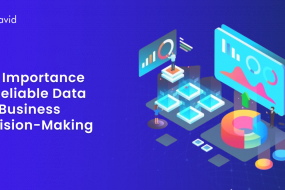
Healthcare is experiencing a transformative wave with the integration of computer vision (CV). This technology allows machines to “see” and analyze visual data, unlocking a multitude of applications within the medical field. While X-rays and MRIs have long been our visual allies, CV takes it a step further, leveraging advanced algorithms to glean deeper insights and revolutionize how we approach diagnosis, treatment, and overall patient care.
Let’s explore eight cutting-edge applications of CV in healthcare, pushing the boundaries of what’s possible:
1. Early Disease Detection:
- AI-powered tumor detection: CV algorithms can analyze mammograms, X-rays, and CT scans with remarkable accuracy, identifying cancerous growths at earlier stages, leading to timely intervention and better patient outcomes.
- Skin cancer analysis: Mobile apps equipped with CV can help individuals screen for suspicious moles and skin lesions, potentially detecting melanoma in its early stages.
2. Real-time Surgical Assistance:
- Augmented reality (AR) overlays: Surgeons can visualize crucial anatomical structures within a patient’s body during surgery, minimizing invasive procedures and improving surgical precision.
- Automated surgical robots: Guided by CV algorithms, robots can perform certain delicate tasks with enhanced accuracy and control, reducing human error and fatigue.
3. Remote Patient Monitoring:
- Fall detection in seniors: AI-powered systems can analyze video footage from homes, alerting caregivers in case of falls, enabling timely intervention and preventing serious injuries.
- Mental health monitoring: By analyzing facial expressions and body language, CV can assist in remotely assessing mental health conditions and provide early intervention for patients.
4. Automated Rehabilitation and Physical Therapy:
- Tracking patients’ movements: CV systems can monitor exercise routines, providing real-time feedback and corrective guidance, enhancing rehabilitation outcomes and promoting proper form.
- Virtual therapists: AI-powered avatars can guide patients through personalized exercise programs, offering accessible and individualized therapy support.
5. Medication Adherence Monitoring:
- Image recognition of pills: Apps can help patients identify medications accurately, reducing risks of accidental overdoses or missed doses, especially for individuals with multiple prescriptions.
- Smart dispensers with facial recognition: Dispensers can verify users and dispense only the prescribed medication, improving medication safety and adherence.
6. Personalized Medicine and Precision Healthcare:
- Analyzing genetic data: By analyzing facial features and other visual details, CV can assist in identifying individuals with specific genetic predispositions, enabling personalized preventive measures and targeted treatment approaches.
- Tailoring treatment plans: CV can analyze individual patient data, including images, to refine treatment plans and predict potential responses to different therapies.
7. Streamlining Administrative Processes:
- Automated patient registration: Facial recognition can replace cumbersome paperwork, facilitating faster onboarding and reducing wait times for patients.
- Medical record analysis: CV algorithms can extract relevant information from medical images and documents, saving time and improving data accuracy for administrative tasks.
8. Enhancing Medical Education and Training:
- Interactive 3D medical models: Students can visualize and interact with intricate anatomical structures, gaining a deeper understanding of human biology.
- Virtual surgery simulations: Trainee surgeons can practice complex procedures in VR environments, honing their skills before operating on real patients.
These are just a glimpse into the transformative potential of CV in healthcare. As research and development continue, we can expect even more innovative applications to emerge in the coming years. However, it’s crucial to address ethical considerations, data privacy concerns, and potential biases in algorithms to ensure this technology serves humanity responsibly and equitably.











